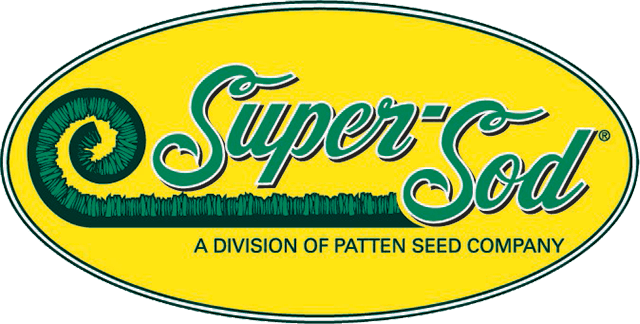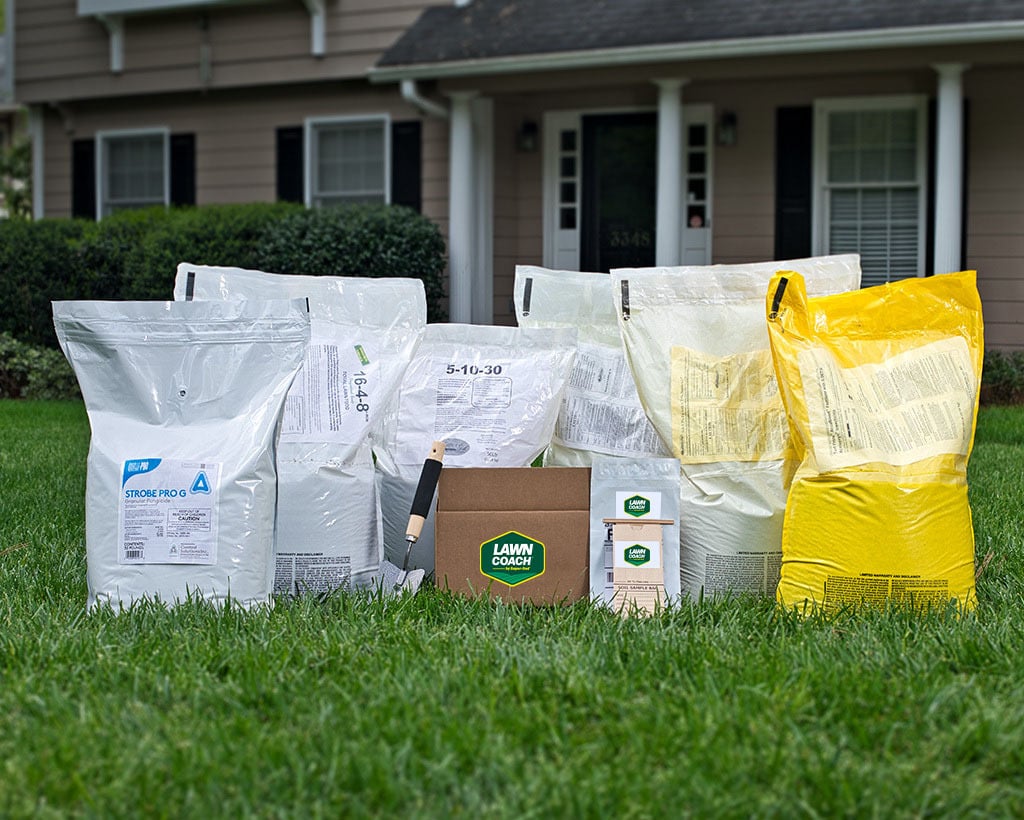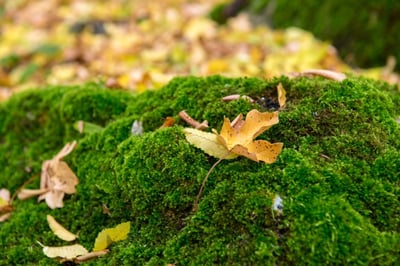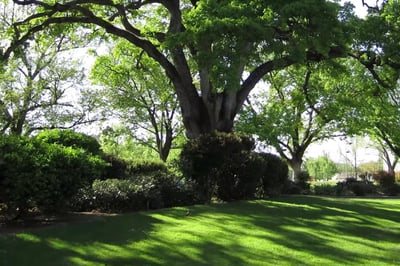
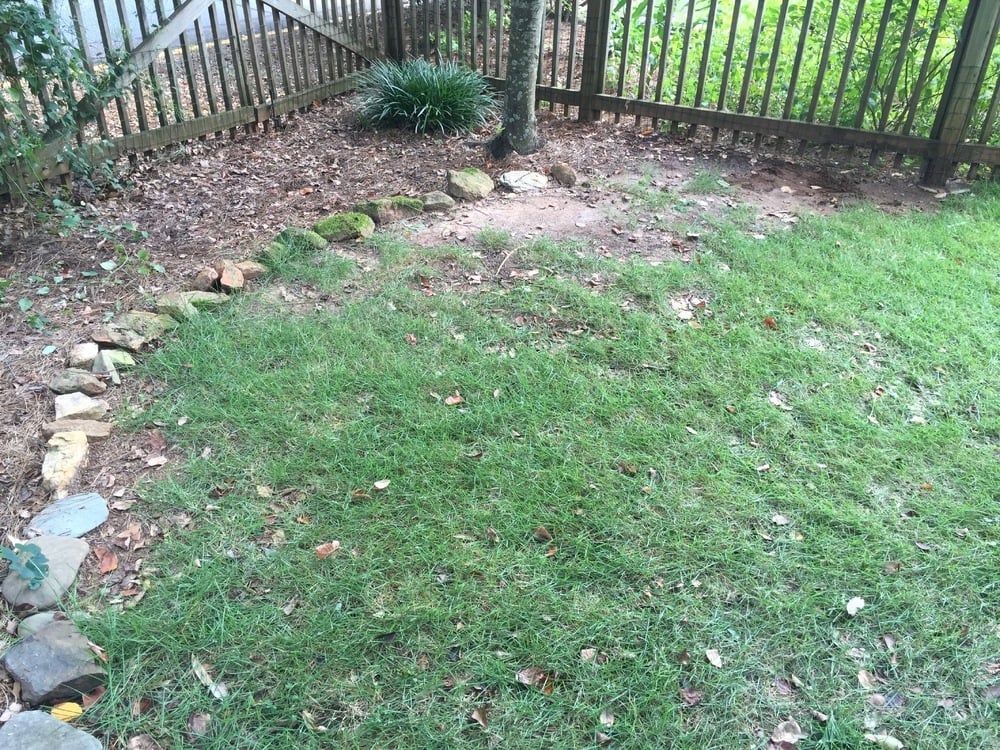
An important aspect of my job is helping customers decide which type of shady lawn grass to purchase. Once or twice a week I have to deliver the disappointing news that a client’s yard is too shady for the lush, green lawn they have been dreaming about. Inevitably, the client gives me sad puppy dog eyes and asks the following: What CAN I do?
If your lawn looks thin, patchy, or struggles to fill out under those leafy limbs, you might be asking whether your yard simply doesn’t get enough sunlight. Grass is a living plant that needs three essentials to thrive: light, water, and nutrient-rich soil. But when tree canopies, buildings, or fences block the sun, even the toughest turf can become lacklustre.
In this article, you’ll learn how much direct sunlight lawn grasses actually require, which grass types tolerate shade better than others, and what practical steps you can take if your lawn area falls short of the full-sun ideal. Whether you’re aiming for a lush, vibrant turf or exploring alternatives for those stubborn shady patches, we’ll walk you through the decision path and give you actionable advice for a smarter outcome.
Read on to learn my solutions for growing grass in shade.
How Much Lawn Shade is "Too Much?"
As a living plant, grass needs sunlight, water, and healthy soil with nutrients. In order to thrive, each variety of grass has its own requirements for the minimum amount of direct sunlight per day.
The terms direct sun and filtered sun are essential to understand:
- Direct sunlight – The sun shines directly on the grass with nothing obstructing its path.
- Filtered or dappled sunlight – Sunlight passes through branches or leaves of trees, other plants, or structures before it reaches the grass. Pine shade is a type of shade that some grasses grow well under; plus it's "high shade," meaning the branches are high so that sunlight hits the lawn in the early or later parts of the day.
Here's our chart ranking how much sun grass needs:
| Lawn Type | Minimum Hours of Direct Sunlight Needed |
| St. Augustine* | 2-3 hours |
| Tall Fescue* | 3-4 hours |
| Zeon Zoysia* | 4-5 hours |
| TifTuf Bermuda* | 5-6 hours |
| TifBlair Centipede* | 6-7 hours |
| Zenith Zoysia | 6-7 hours |
| Tifway Bermuda | 8+ hours |
*Tolerant of high pine or other filtered shade, as long as it does get direct, unfiltered sunlight hours as indicated. Site conditions will vary greatly, so you may have to adjust your landscaping if there isn't enough sunlight.
As you can see, depending on region, Super-Sod's most shade-tolerant grass varieties for partial shade are St. Augustine (only available in Texas), Tall Fescue, and Zeon Zoysia.
TifTuf Bermuda and TifBlair Centipede can also be considered for partial shade, especially if it's pine shade.
In general, if even the most shade-tolerant lawns don't receive at least 3 hours of direct sunlight, there is simply too much shade for grass, and trees should be removed or lawn alternatives considered. Keep reading for those solutions!
Super-Sod's Elite Tall Fescue requires only 3-4 hours of direct sunlight. This picture shows Tall Fescue in the open area, but under the shaded tree canopy are Hostas, other shade-loving plants, and a layer of mulch.
The left side of this Zoysia lawn is too shady, so it's thin with bare spots, while the rest of the lawn receives enough sun to grow thick and plush. The unsightly bare spots should be fixed by extending the mulch and planting more monkey grass. 
What Can I Do to Grow Lawn Grass in Shade?
That depends entirely on the reason for the shade.
Trees Causing Shade on Lawns: Sometimes a tree can be removed, or branches trimmed to elevate the tree canopy and allow more direct sun to angle in during the morning and late afternoon.
These changes may increase the amount of direct sun enough to make grass an option. But sometimes there is just no way to get adequate light to the area and other solutions must be employed.
Learn more about shade in our video about Shade and Turf and learn how dogs can bring their own set of challenges to a lawn, shady or otherwise, in How to Grow Grass in the Shade if You Have Dogs.
A fire pit, entertaining area, and playset are the perfect fit for the shady end of this Zoysia lawn. This lawn is thriving in the full sun area, further away from the trees. Photo by Brad Hubinek of Super-Sod.
Lawn Alternatives for Shade
The answer varies depending on the topography, size of the space, your budget, lifestyle, and the time you have available to devote to gardening. Here are some ideas for lawn alternatives for shade and fixing bare spots in shade:
- Expand mulched areas;
- Spread gravel for paths and sitting areas;
- Install hardscaping for paths, a patio, a outdoor kitchen, fountains, ponds, fire pits, decorative stone;
- Plant more shade-loving groundcovers, perennials, and shrubs;
- Or some combination of these things.
You will need to determine how you wish to use the space. For entertaining, hardscaping is a good option. If it is for recreation, mulch is the best way to go. But planting the area will do a better job of soil retention, and drifts of ground cover plants are really beautiful.
I recommend consulting a professional landscape designer or landscape architect to avoid costly mistakes.
A bench and potted plants complete the gravel hardscaping and groundcovers of Ferns and Pachysandra in this cozy, shady nook. 
Golden Creeping Jenny, Hellebores, and Monkey Grass, combined with stepping stones, create a path through a shady area that connects two areas of Zoysia lawn. 
Groundcover Perennial Plants for Shady Yards
There are so many options! Even though these plants cannot withstand a football game like a lawn, they do control erosion, fill open spaces, and provide a lovely woodland garden look.
Some of my favorite low-growing shade plants are:
- Hostas
- Ferns
- Pachysandra
- Golden Creeping Jenny
- Pulmonaria
- Hellebores
- Heucheras
- Solomon’s Seal
- Tricyrtis
- Ajuga
- Vinca minor
- Lamium
- Monkey Grass
- Dwarf Mondo Grass
- Columbine
Variegated Solomon's Seal spreading in the shade of a tree. 
Dwarf Mondo Grass and Ferns in a shade garden. Stones, sculptures, and other architectural focal points are useful for shade gardens because, obviously, they don't need sunlight either way.

Assessing your Shady Yard
If you are unsure how much sun an area gets, I recommend downloading the Lumos: Sun and Moon Tracker app for iPhone. It’s a great tool to help you track the path of the sun through the day and see how many hours of direct sun each part of your yard receives. You can see if the sunlight would be blocked by trees or by your house as the sun moves through the day. You can even adjust the time of year within the app.
Once you have gathered information on how much direct sunlight you have, our team of Super-Sod experts are here to guide you in choosing the best grass for shade in your climate. We are here to help!
All photos by Hillary Thompson, Communications Director, unless otherwise noted.-1.png?width=400&height=600&name=Copy%20of%20Untitled%20(3)-1.png)
